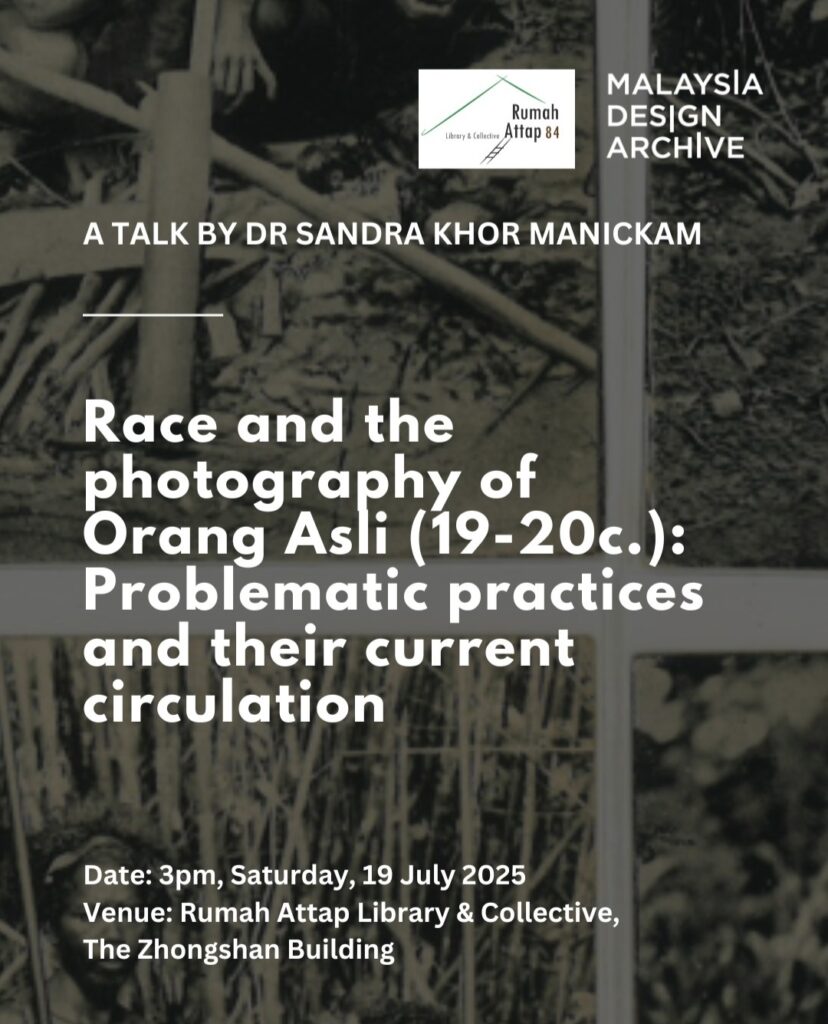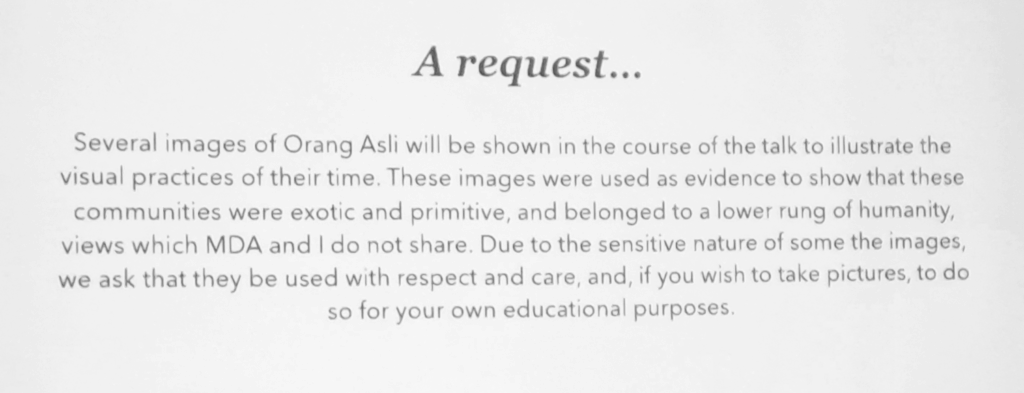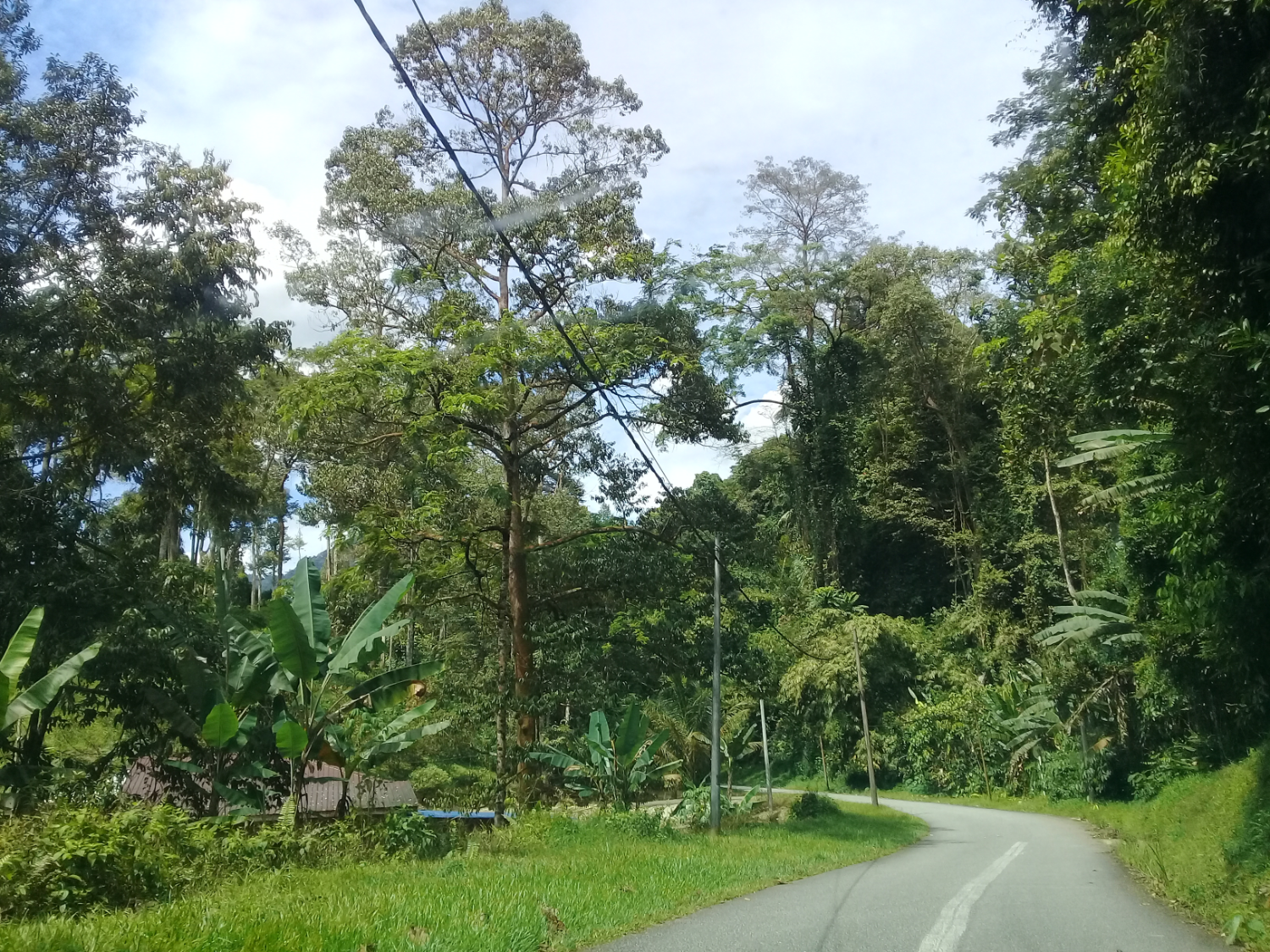
A few weeks ago, I attended this talk titled Race and the Photography of Orang Asli (19-20c): Problematic practices and their current circulation. I joined this talk because I wanted to understand my Orang Asli1Orang Asli is the Malay term for the indegenous people in Malaysia friends better. Admittedly, I had preconceived notions about them, especially learning from the adults when I was growing up. It was after I started researching and reading up about postcolonialism and realised that I had many unchecked biases about different ethnicities.
Consequently, I bertaubat (repented) of such biases, and it is a constant reminder to continue being humble and learn with an open mind, which led me to have Orang Asli friends. I am truly blessed to know them as they are sensitive, perceptive and gentle souls.
Hence, going to this talk was to check on my biases and how I can support my Orang Asli friends in the future. When I say support, I mean as an ally instead of becoming a saviour. It is disappointing that some people view them as lowly and often want to save them instead of giving them ownership to live their lives
Thoughts
My standard routine of attending talks is to take photos of the slides and make notes about them. However, the first two slides have a request and a content warning.

Request to use these images with respect and care.

Content warning about using specific terms and their depiction of the Orang Asli people.
These are important reminders because anyone can learn something new about Orang Asli, but not all of us know what the intention is behind such photographs. Sometimes, we think that we should share visuals with others for awareness without understanding if it is respectful and helpful. Hence, I would not be putting any photos of Orang Asli in this post prevent more misunderstanding.
Key takeaways
Every photographer who takes a photo intends to create a specific narrative
At the beginning of the talk, Dr Sandra Khor Manickam showed a 1879 photo of an Orang Asli. She asked a few questions to the audience to analyse the photo, such as:
- Who do you see?
- What is depicted?
- What are you already expecting to see, expecting to understand?
- What does the photographer want you to understand?
These questions can also be used to analyse any visuals of any form, whether it is a painting or a sculptural piece. Asking these questions will give us a clue of people’s intention during a specific period.
Context
Sometimes it is easy not to question what we see, and we take it for the whole truth. Just like different publications, all publications have their own approaches to a specific topic. In the context of these photographs displayed in the talk, it was taken in 1879 onwards during the British colonisation. These photos were based on racial science and the anthropologists of that time. One of the intentions of such photographs is to show primitiveness and exoticism of the Orang Asli.
Photo manipulation
As a designer, I have learnt photo manipulation using software such as Adobe Photoshop. Hence, it was new information for me that photo manipulation was done during colonial times, especially with Orang Asli imageries.
Dr Sandra compared a few photos that were original and manipulated. She explained that some of the images have more embellishments to highlight the Orang Asli to fit the colonial narrative of that time.
Conclusion
By the end of the talk, I had a nagging question in my mind. What will my Orang Asli friends think when they see these images? The talk was more on the academic side. If we are honest, these talks might isolate certain groups of people. Furthermore, I am angry because such photo manipulations happen in the past, and many people still believe in those images.
One thing I can do after this talk is to vet the photos I use for this blog carefully. I write about Orang Asli in this blog to share my learnings and findings, and putting a suitable picture is crucial. It is not always about the number of images per post or the aesthetic, but how these images can be displayed to highlight our respect for the indigenous.
References
- 1Orang Asli is the Malay term for the indegenous people in Malaysia


